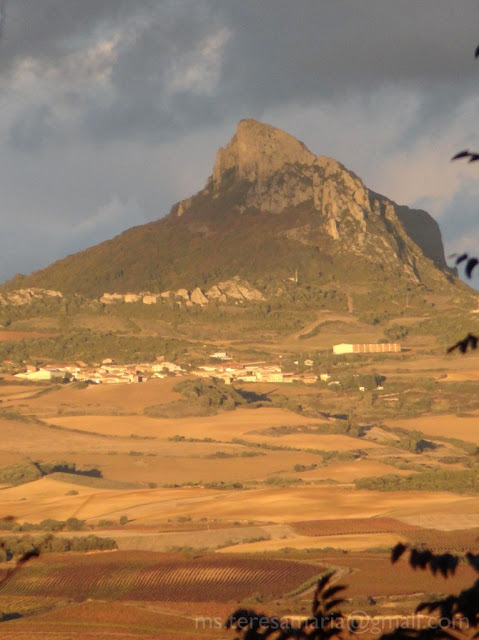Laguardia is a lovely medieval walled village in the Álava province of the Basque
Country in Spain. With a population of some 1,500 I just cannot call it a town even if it once held a very important position of a township in the region. Its history dates back to the 10th century when the king of Navarra built a castle on the hilltop
overlooking the whole area of the present Rioja Alavesa wine region. The wall that still surrounds the old village entirely was built in the 13th century. (We
visited Laguardia twice on our November tour in the wine region of Rioja but both times in
the evening and therefore my photos of the place are very limited.)
What is extraordinary about Laguardia
is the fact that it used to be connected with a network of caves and corridors carved in stone
underneath practically the whole of the old hilltop village. The caves date back to the 17th century and have since then served both as wine cellars and shelter in
times of war. They are still intact but the connections between them have been blocked so that these
days each house has a cave of its own. Their sizes, however, do not reflect the
area of the house above but the particular needs each house had at the time of the blocking. A few wineries still
produce wine according to the traditional method of carbonic maceration in their
cave 8 metres below street level.
We were lucky to visit one of these wineries.
The Bodegas Carlos San Pedro Pérez de Viñaspre is a small family winery with a tradition of centuries: the San
Pedro family has been producing wines in Laguardia for more than 500 years. They do have a modern 21th century winery but they also use the more than 300-year-old
winery in the cave for fermentation of their non-aged wines and well as storage
for their aged wines.
So we descended the stairs and corridors to the
cave to see for ourselves how processing of young wine takes place in large
open tanks or basins there. The winemaker climbed the ladder of one of the two basins to take some wine for
the visitors to taste. You might have assumed that wine very early in its
fermentation process would not be so pleasant to taste but it surprised you
totally. On second thought, it is only natural that the proven ancient method would still be completely valid.
The constant conditions in the cave
– temperature of about 13°C
(55°F) and humidity of about 85% – provide perfect
natural conditions also for the wines to be aged that are produced using the Bordeaux or
destemming method.
This post completes my Rioja series. As wonderful as the autumn holiday was it’s about time! The earlier ones were:
On Rioja (background info)
Some wine cellars! (Marqués de Riscal winery)
At the gates of a paradise (Remelluri vineyards)
A thought-provoking chapel (Remelluri chapel)
Below some final views from Laguardia towards the Cantabria mountains.











Kiitos tästä matkakertomuksesta. Olipa paljon kauniita kuvia ja maisemia. Iski hirmuinen matkakuume, ouh.
ReplyDeleteEipä kestä. Talvihorroksen takia sarja venyi turhankin pitkälle ajalle, mutta äskettäiseen Italian-matkaan aion palata pikemmin...
Delete